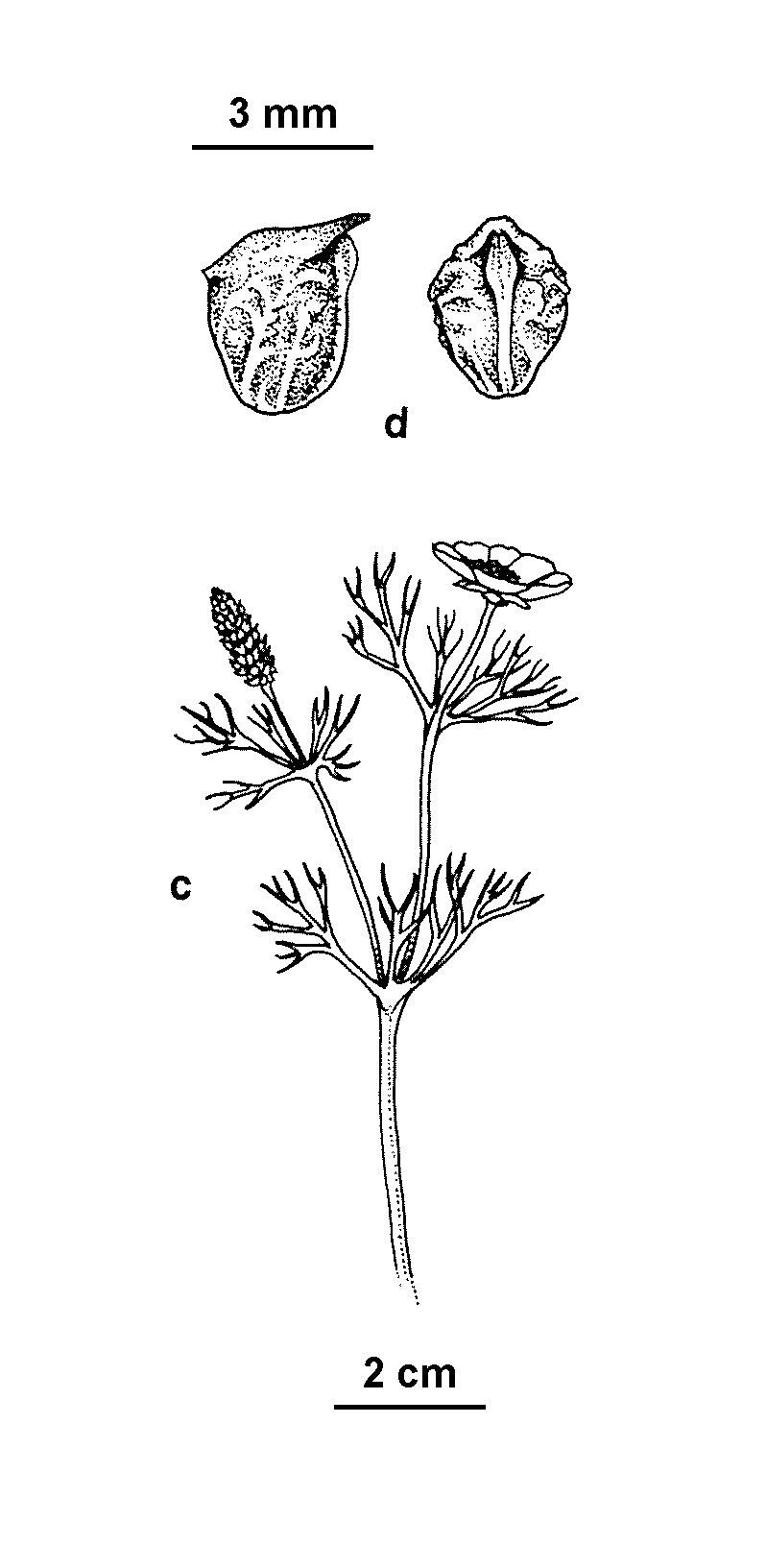Adonis microcarpa
DC. Pheasants-eye AdonisErect glabrous annual to c. 50 cm high; leaves petiolate below, subsessile above, broadly obovate in outline, to 6 cm long, 4 cm wide, bi- or tripinnate with ultimate segments linear, to c. 4 mm long, 1 mm wide. Flowers solitary, terminal at the ends of branches, on an elongated peduncle c. 1–5 cm long; sepals purplish, 5–12 mm long, spreading to reflexed; petals (5–)6–8(–10), suberect to widely spreading, red or yellow with a black basal blotch, obovate, 7–12 mm long; stamens numerous, c. 5 mm long, anthers dark purple, c. 1 mm long; carpels 10–50. Achenes plump, obovoid to c. triangular in outline, c. 3 mm long, with lateral reticulate ridges, and an ascending terminal beak c. 1 mm long; receptacle elongating as achenes mature, finally to c. 2 cm long. Flowers Sep.–Oct.
MuM, Wim, GleP. Naturalised all States except NT and ACT. Known in Victoria from only 5 collections or reports of infestations (Dimboola, Jeparit area, Lindsay, west from Casterton, and Horsham district). Apparently associated with cereal crops, and open areas around Lake Hindmarsh.
The names Adonis autumnalis L., A. annua L. and A. aestivalis L. have been incorrectly applied to Australian material as indicated by Kloot (1976).
Walsh, N.G. (1996). Ranunculaceae. In: Walsh, N.G.; Entwisle, T.J., Flora of Victoria Vol. 3, Dicotyledons Winteraceae to Myrtaceae, pp. 35–63. Inkata Press, Melbourne.
 Spinning
SpinningKloot, P.M. (1976). The species of Adonis L naturalized in Australia. . Muelleria 3(3): 199–207.




